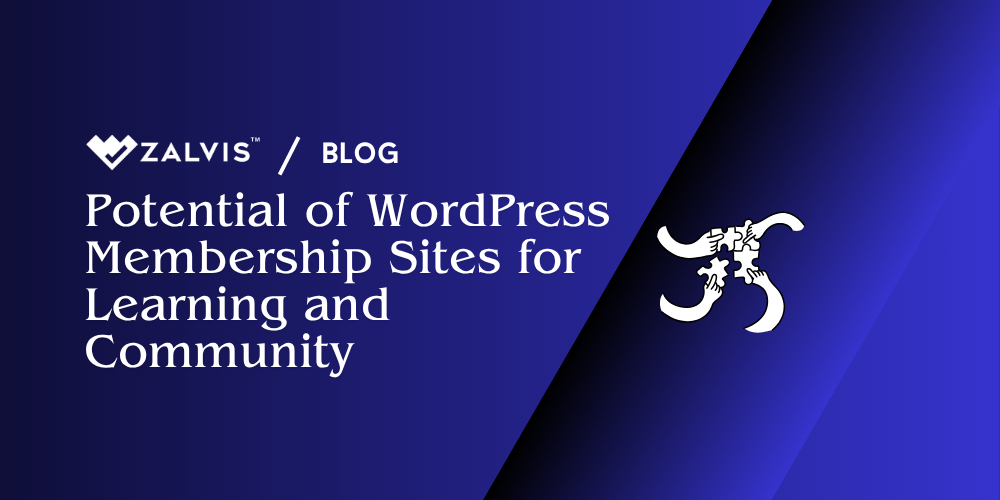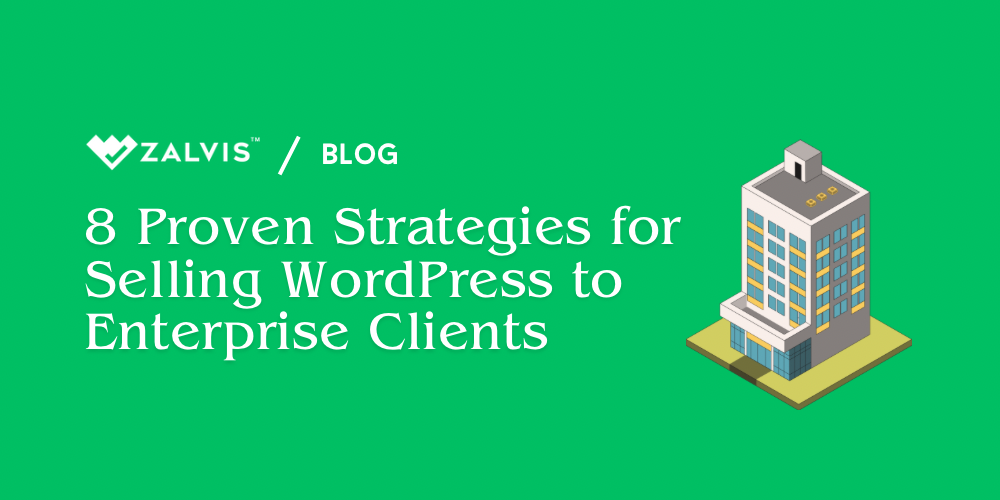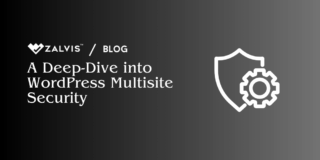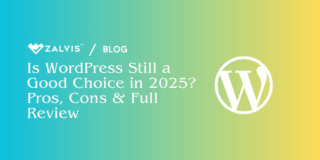Imagine turning your expertise into a vibrant, exclusive hub where members not only learn but connect and grow together. This is the untapped potential of WordPress membership sites. They are a game-changer for creators and educators, providing the framework to build a thriving learning community, deliver premium online courses, and create a sustainable, recurring revenue stream. In this guide, we’ll explore exactly how you can unlock this potential.
Potential of WordPress Membership Sites for Learning and Community
The landscape of education is undergoing a profound transformation, accelerated by digital technologies and a growing demand for flexible, accessible learning experiences. Educators, from individual tutors and coaches to established institutions, are increasingly looking beyond traditional classroom walls and standard Learning Management Systems (LMS) to find innovative ways to connect with learners, share knowledge, and build sustainable teaching models.

In this evolving environment, WordPress, the world’s most popular content management system, emerges as an extraordinarily powerful and versatile tool. When combined with membership functionality, WordPress transforms from a simple website platform into a dynamic hub for protected content, interactive communities, and structured online learning – creating what is known as a WordPress membership site.
For educators seeking greater control, flexibility, and direct engagement with their audience, understanding how to leverage these sites is becoming an essential skill. This article delves deeply into the multifaceted ways educators can utilize WordPress membership sites, exploring the benefits, features, setup considerations, strategic applications, and potential challenges involved in building a thriving online educational ecosystem.
Why WordPress? The Foundation for Educational Innovation
Before exploring membership sites specifically, it’s crucial to understand why WordPress itself is such a suitable foundation for educators. Its open-source nature means it’s free to use, modify, and build upon, offering unparalleled freedom compared to proprietary platforms that often come with hefty subscription fees and creative limitations.
WordPress boasts an immense ecosystem of themes (which control the site’s design) and plugins (which add specific functionalities). This extensibility allows educators to tailor their site precisely to their needs, whether they require sophisticated course delivery features, robust community forums, intricate content access rules, or seamless e-commerce integration. Furthermore, WordPress is inherently scalable.
An educator can start with a simple site offering a single course or resource library and gradually expand it to host numerous courses, multiple membership tiers, large communities, and complex functionalities without needing to migrate to a different platform. The vast global community supporting WordPress ensures ample resources, tutorials, and professional help are available, making it accessible even for those with limited technical expertise. Compared to many dedicated online course platforms, a self-hosted WordPress site grants educators complete ownership of their content, user data, and branding, fostering independence and long-term control over their digital presence.
Defining the Educational WordPress Membership Site
At its core, a WordPress membership site is a website where access to certain content, features, or community areas is restricted to registered and often paying members. In an educational context, this model provides a framework for delivering structured learning experiences, premium resources, and exclusive community interactions. Unlike a standard blog or informational website where all content is publicly accessible, a membership site creates distinct boundaries. These boundaries are typically defined by membership levels or tiers. For instance, an educator might offer:
A free tier providing access to introductory materials, basic articles, or a general community forum, serving as a lead generation tool.
A basic paid tier offering access to a specific course, a collection of downloadable resources, or entry-level support.
A premium tier granting access to all courses, advanced workshops, personalized coaching sessions, exclusive live Q&A events, and a private community forum.
The key mechanism enabling this is a membership plugin. These specialized plugins integrate with WordPress to handle user registration, manage different membership levels, restrict content based on those levels, process recurring or one-time payments through integrated payment gateways (like Stripe or PayPal), and manage member accounts.
It’s this controlled access system that transforms a standard WordPress site into a powerful platform for delivering educational value in a structured and potentially monetized way. It differentiates itself from a standalone LMS plugin (though they often work together) because its primary focus is on access control and recurring relationships, rather than solely on course structure and pedagogy, although the lines can blur depending on the plugins used.
Compelling Advantages for Modern Educators
Leveraging a WordPress membership site offers a multitude of significant benefits for educators seeking to innovate and expand their reach. One of the most attractive aspects is the potential for sustainable monetization. Instead of relying solely on one-off course sales or hourly tutoring rates, membership sites allow educators to create predictable, recurring revenue streams through monthly or annual subscriptions. This financial stability can empower educators to dedicate more time to developing high-quality content and engaging with their learners, rather than constantly chasing the next sale. It also opens doors to diversifying income through different membership tiers, bundled offers, or selling supplementary digital products like ebooks or toolkits exclusively to members.
Beyond the financial dimension, control and ownership are paramount advantages. When using third-party platforms (like Udemy, Skillshare, or even some hosted LMS solutions), educators often face restrictions on pricing, course structure, branding, communication with students, and access to crucial user data. Policies can change unexpectedly, impacting revenue and strategy. With a self-hosted WordPress membership site, the educator retains complete control. They decide the pricing, the content format, the site’s look and feel, the communication channels, and, critically, they own their audience list and all associated data. This autonomy is invaluable for building a distinct brand and fostering direct, long-term relationships with learners without intermediaries dictating the terms of engagement.
Building vibrant learning communities is another key strength. Education is inherently social, and membership sites provide the tools to cultivate interaction and peer-to-peer learning. Integrated forums (using plugins like bbPress or BuddyPress), dedicated comment sections on protected content, member directories, and private messaging features can transform a passive content consumption experience into an active, supportive community. Learners can ask questions, share insights, collaborate on projects, and motivate each other, significantly enhancing the educational value beyond the core content. The educator can actively participate, moderate discussions, host live Q&A sessions, and build a genuine rapport with members, fostering loyalty and reducing churn.
From a pedagogical perspective, membership sites excel at structured content delivery and organization. Educators can meticulously organize learning materials into modules, lessons, or resource categories. Content restriction rules ensure learners access materials appropriate to their membership level or progress. A particularly powerful feature offered by many membership plugins is content dripping. This allows educators to release content gradually over time (e.g., one module per week) after a member signs up. This prevents overwhelm, encourages steady engagement, keeps learners subscribed longer, and mimics the pacing of a traditional course structure, proving highly effective for longer programs or ongoing training. Progress tracking features, often integrated with LMS plugins, allow both learners and educators to monitor advancement through the material.
The inherent flexibility and scalability of the WordPress platform mean the membership site can evolve alongside the educator’s goals and the learners’ needs. One might start with a simple resource library and later add comprehensive courses. Different membership levels can be introduced or modified. New community features can be integrated. The site can adapt to various teaching models – from self-paced courses to cohort-based programs with live components, to ongoing resource access subscriptions. This adaptability ensures the platform remains relevant and effective as the educational offering grows in scope and complexity.
Finally, WordPress membership sites significantly enhance reach and accessibility. Educators are no longer constrained by geography or fixed schedules. They can reach a global audience, offering asynchronous learning opportunities that learners can access at their own pace and convenience. This democratizes access to specialized knowledge and provides valuable learning options for individuals with busy schedules or those living in remote areas.
Essential Features and Functionality Under the Hood
To bring an educational membership site to life, several core features, typically provided by a dedicated membership plugin possibly in conjunction with other plugins, are essential:
Membership Levels/Tiers: The ability to create distinct access levels (e.g., Free, Bronze, Silver, Gold) with different permissions and pricing is fundamental. This allows educators to segment their audience and tailor offerings accordingly.
Content Restriction: This is the heart of a membership site. Robust plugins allow educators to restrict access not just to entire pages or posts, but also to specific parts of content within a page (using shortcodes), categories, tags, downloadable files, custom post types (like course lessons), or even menu items. Rules can be complex, granting access based on membership level, purchase history, or even time since registration.
Payment Gateway Integration: Securely processing payments is critical for paid memberships. Seamless integration with popular gateways like Stripe (for credit cards, SEPA, etc.) and PayPal is standard. Good plugins handle recurring billing automatically for subscriptions, manage invoices, and deal with failed payments gracefully.
User Registration and Management: The system needs to handle user sign-ups smoothly, allow members to manage their profiles and subscriptions, and provide administrators with tools to view member details, manually add or remove members, track payment history, and manage user roles.
Content Dripping (Scheduled Content Release): As mentioned earlier, this feature allows content to be released to members incrementally based on their registration date or a fixed schedule. This is crucial for structuring courses and maintaining engagement over time.
Email Notifications: Automated emails are vital for communication. This includes welcome emails upon registration, payment confirmations, renewal reminders, notifications of expiring credit cards, and potentially content update alerts. Customizable email templates allow educators to maintain brand consistency.
Community Building Tools: While some membership plugins offer basic profiles, deeper community features often rely on integration with specialized plugins like bbPress (for traditional forums) or BuddyPress (for social networking features like activity streams, groups, and friend connections).
Learning Management System (LMS) Integration: For educators offering structured courses with quizzes, assignments, certificates, and advanced progress tracking, integration with a dedicated LMS plugin (like LearnDash, LifterLMS, Tutor LMS, or LearnPress) is often necessary. The membership plugin handles access to the course, while the LMS plugin handles the delivery and pedagogical elements within it. This combination creates a powerful online school environment.
Reporting and Analytics: Understanding member behaviour is key to growth. Educators need access to reports on sign-ups, cancellations, revenue, popular content, and member engagement metrics to make informed decisions about their offerings and marketing strategies.
Navigating the Setup: Bringing Your Vision to Life
Creating a WordPress membership site involves several steps, moving from foundational elements to intricate configurations. First, the foundation must be laid: selecting a reliable web host suitable for membership sites (which often require more resources than simple blogs), registering a domain name, and installing the core WordPress software.
Next comes the crucial decision of choosing the right tools, primarily the membership plugin. Popular and robust options include MemberPress, Restrict Content Pro, Paid Memberships Pro, Memberium (specifically for Infusionsoft/Keap users), and WishList Member. The choice depends heavily on specific needs, budget (most powerful options are premium), required integrations (especially with email marketing services or LMS plugins), and technical comfort level. If delivering structured courses is the primary goal, selecting an LMS plugin that works well with the chosen membership plugin is also essential at this stage.
The visual presentation is handled by the WordPress theme. Educators should choose a theme that is well-coded, responsive (mobile-friendly), compatible with their chosen membership and LMS plugins, and aligns with their brand aesthetic. Many themes are specifically designed for educational sites or LMS integration.
Configuration is where the membership logic takes shape. This involves defining the different membership levels, setting their pricing (one-time fee, recurring subscription – monthly, annually), configuring the content restriction rules (protecting specific pages, posts, categories, or custom content types), setting up the chosen payment gateways, and customizing the automated email notifications sent to members. If using content dripping, the release schedules for protected content need to be established.
With the structure in place, the focus shifts to content creation and organization. This involves uploading course videos, writing lesson text, creating downloadable resources (PDFs, templates, worksheets), setting up community forums, and organizing everything logically within the site’s structure and behind the appropriate membership restrictions. Clear navigation is vital for a positive user experience.
Before welcoming members, thorough testing is non-negotiable. Educators should test the entire user journey: the registration process for different membership levels, the payment process, content access after login (ensuring restrictions work correctly), content dripping schedules, profile management, and the cancellation process. Testing from the perspective of different member types ensures everything functions as intended.
Finally, the launch and ongoing marketing phase begins. This involves announcing the site to the target audience, driving traffic through various channels (email marketing, social media, content marketing, SEO, potential partnerships), and implementing strategies to attract and onboard the first cohort of members. Launching might involve special introductory offers or early bird pricing to build initial momentum.
Diverse Applications: Tailoring Membership Sites to Educational Needs
The versatility of WordPress membership sites allows educators to implement a wide range of educational models:
Comprehensive Online Courses: The most common application, where entire courses, complete with video lessons, quizzes, assignments, and downloadable materials, are protected behind a membership paywall. Content dripping can pace the learning experience over weeks or months.
Premium Resource Libraries: Educators can offer subscriptions for access to a curated collection of valuable resources, such as templates, worksheets, checklists, video tutorials, case studies, research summaries, or code snippets, catering to professionals or learners seeking practical tools.
Tutoring and Coaching Programs: Membership can provide access to exclusive group coaching calls, one-on-one session booking privileges, specialized training modules, accountability tracking, and a private community for ongoing support between sessions. Different tiers could offer varying levels of direct access to the educator.
Continuing Professional Development (CPD): Professionals often require ongoing training to maintain certifications or stay current in their field. Membership sites can deliver accredited courses, track learning hours, issue certificates (often via LMS integration), and provide access to industry updates and expert forums.
Niche Knowledge Communities: Educators specializing in highly specific fields (e.g., advanced theoretical physics, historical linguistics, specialized craft techniques) can build paid communities where enthusiasts and learners can access unique content, engage in high-level discussions, and connect with peers who share their passion.
Supplemental Materials for Traditional Courses: Educators in schools or universities can use a private membership area to provide supplementary readings, lecture recordings, discussion forums, or extra credit assignments for their offline classes, enhancing the learning experience beyond the physical classroom.
Mastermind Groups: High-ticket, small-group memberships can provide an intimate environment for peer mentoring, accountability, and intensive collaboration under the guidance of an expert educator or facilitator. Access includes exclusive content, regular group meetings, and direct feedback.
Sequential Learning Paths: By carefully structuring content access and using prerequisites (often an LMS feature integrated with membership), educators can guide learners through a defined sequence of courses or modules, unlocking advanced topics only after foundational ones are completed.
Strategies for Cultivating a Successful Educational Membership Site
Simply setting up the technical infrastructure is not enough; long-term success requires strategic planning and consistent effort across several key areas. A clear value proposition is paramount. Potential members must immediately understand what specific problems the membership solves, what unique benefits they will receive, and why it’s worth their investment. This needs to be communicated clearly on the site’s sales pages and marketing materials.
A robust content strategy is the lifeblood of any educational membership site. High-quality, relevant, and engaging content is essential not only for attracting new members but also for retaining existing ones. This involves planning a content calendar, regularly adding new materials (courses, resources, workshops), updating existing content, and potentially incorporating diverse formats (video, audio, text, interactive elements) to cater to different learning styles.
Active community management transforms a content repository into a living educational environment. This means encouraging interaction, initiating discussions, responding promptly to questions, moderating forums to maintain a positive and respectful atmosphere, and potentially hosting live events like webinars or Q&A sessions exclusively for members. A well-managed community significantly increases perceived value and member loyalty.
Effective marketing and promotion are crucial for growth. Educators need to identify their target audience and reach them where they are. Strategies can include content marketing (blogging, podcasting, YouTube videos) to demonstrate expertise and attract organic traffic, search engine optimization (SEO) to improve visibility in search results, social media marketing, email list building and nurturing, paid advertising campaigns, and potentially affiliate programs or partnerships.
Focusing on member engagement and retention is often more cost-effective than constantly acquiring new members. Strategies include personalized onboarding sequences for new members, regular communication through newsletters, soliciting feedback and acting upon it, celebrating member milestones or achievements, introducing new features or content regularly to keep the offering fresh, and leveraging content dripping to maintain momentum. Analyzing member activity data can reveal which content resonates most and where engagement might be dropping off.
Developing a thoughtful pricing strategy is key. This involves researching competitors, understanding the perceived value of the offering, and deciding on appropriate price points for different membership tiers. Offering both monthly and discounted annual subscription options can cater to different preferences. Free trials or introductory offers can lower the barrier to entry, while tiered pricing allows members to choose the level of access and investment that suits them best.
Finally, ongoing technical maintenance cannot be overlooked. Regularly updating WordPress core, plugins, and themes is essential for security and functionality. Regular backups are critical. Monitoring site performance and ensuring a smooth user experience are ongoing tasks. While WordPress is user-friendly, staying on top of maintenance prevents technical issues that could frustrate members and damage the educator’s reputation.
The Synergy: Integrating Membership with Learning Management Systems (LMS)
For educators whose primary focus is delivering structured courses, integrating a membership plugin with a dedicated LMS plugin creates an incredibly powerful synergy. While the membership plugin expertly handles who gets access and how they pay for it (controlling the “gate”), the LMS plugin takes over once the member is inside, managing the learning experience itself. LMS plugins like LearnDash, LifterLMS, or Tutor LMS provide features specifically designed for education: creating courses with lessons and topics, embedding videos and other media, building sophisticated quizzes and assignments, awarding certificates upon completion, tracking student progress in detail, and enabling prerequisites or course sequencing.
When integrated, the membership plugin might restrict access to an entire course product page created by the LMS. Once a user purchases access via the membership system, they are enrolled in the corresponding course within the LMS. This allows educators to sell access to individual courses, bundles of courses, or all-access passes using the membership plugin’s flexibility, while leveraging the robust pedagogical features of the LMS for the actual delivery. This combination allows educators to build a fully-featured online school or academy entirely within their own controlled WordPress environment.
Navigating the Challenges and Considerations
While the potential of WordPress membership sites is immense, educators should also be aware of the potential challenges. There is an undeniable technical learning curve, especially for those new to WordPress. Setting up the site, configuring plugins, managing integrations, and troubleshooting issues requires a certain level of technical comfort or the willingness to learn (or budget to hire help).
Building and managing a successful membership site demands a significant time commitment. Creating high-quality educational content is time-consuming, as is managing the community, providing member support, and marketing the site. Educators need to realistically assess the time they can dedicate to these ongoing tasks.
Consistent marketing effort is required to attract a steady stream of new members and keep the site financially viable. It’s not a “build it and they will come” scenario; ongoing promotion is necessary.
There are associated costs, including web hosting (robust hosting needed for membership sites can be more expensive than basic hosting), premium plugin licenses (the most powerful membership and LMS plugins often require annual subscriptions), theme costs, payment gateway transaction fees, and potentially costs for email marketing services or other integrated tools.
Protecting intellectual property from content piracy is an ongoing concern for digital content creators. While membership plugins restrict access, determined individuals might still find ways to illicitly share content. Implementing security measures and potentially watermarking materials can help mitigate, but not eliminate, this risk.
Conclusion: Taking Ownership of Online Education
For educators seeking to innovate, expand their reach, build sustainable income streams, and foster genuine connections with learners, WordPress membership sites offer an unparalleled combination of flexibility, control, and power. They provide a robust platform for delivering diverse educational offerings, from structured online courses and premium resource libraries to vibrant learning communities and specialized coaching programs.
By carefully selecting the right tools, developing a clear strategy, creating valuable content, and actively engaging with members, educators can build thriving online educational ecosystems entirely on their own terms. While challenges related to technical setup, time commitment, and marketing exist, the rewards – autonomy, direct audience relationships, recurring revenue, and the ability to shape a unique learning environment – are substantial. In an increasingly digital world, mastering the art of the WordPress membership site empowers educators to take true ownership of their teaching, share their expertise widely, and make a lasting impact on learners around globe.
If you enjoyed this article, then you’ll love Zalvis's WordPress Hosting platform. Turbocharge your website and get 24/7 support from our veteran team. Our world-class hosting infrastructure focuses on auto-scaling, performance, and security. Let us show you the Zalvis difference! Check out our plans.



